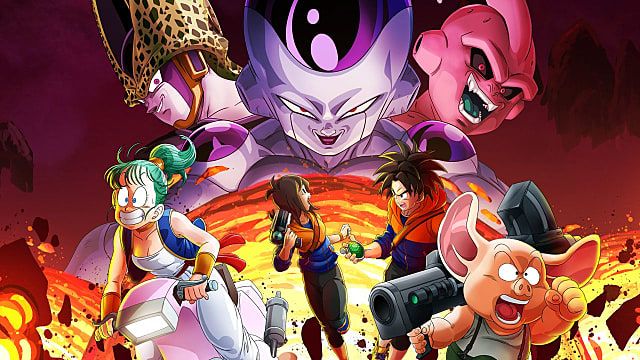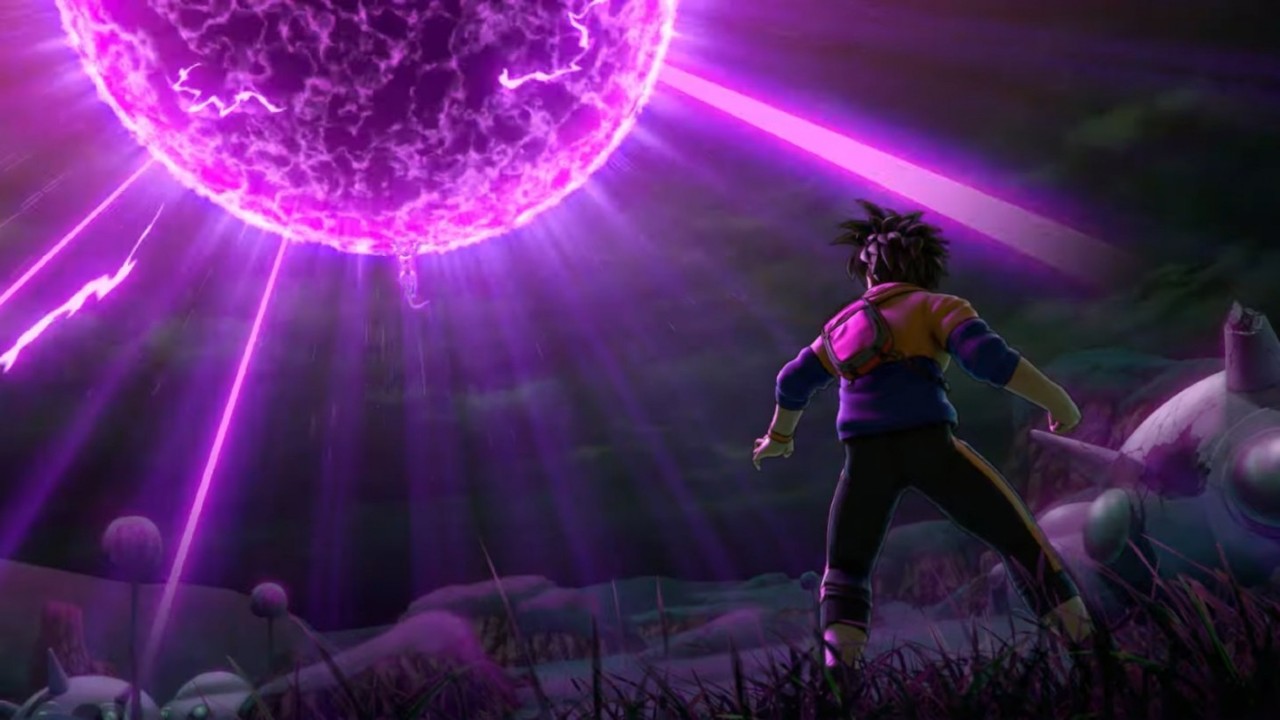Dragon Ball has seen dozens of video game adaptions over the years, but the franchise still manages to squeeze out wildly different experiences. Dragon Ball: The Breakers is easily one of the most unique Dragon Ball games, and its ambition is abundantly clear. But ambition can only take you so far, as The Breakers has a lot of work left to do, even if the overall foundation is surprisingly strong.
Dragon Ball: The Breakers is an asymmetrical multiplayer game in the same vein as Dead by Daylight, pitting six human survivors against iconic villains like Frieza, Cell, and Majin Buu. One player controls the Raider and is tasked with hunting down the survivors, while the other six have to team up and find “Power Keys” that activate a Super Time Machine, which restores the world.
Each match of The Breakers takes place on a map split into different zones, with survivors dropped randomly across the map. Before matches, you can pick your setup and equip two key factors, skills and Transpheres.
Skills essentially give you super-valuable pieces of equipment that are set on cooldown timers, like a grappling hook or smokescreen. Transpheres, on the other hand, allow you to harness the powers of Z Warriors like Goku and Piccolo, getting the chance to fight back against the Breaker on more even ground.
That ties directly into the items you gather during matches. As you explore, you’ll find various chests and breakable objects that contain money, helpful support items, and Power Cubes that charge your D-Change Gauge, which lets you use Transpheres.
All of these factors provide a wealth of different approaches and character builds, as well as a lot of useful tools for survivors to hold their own. This is where The Breaker‘s biggest flaw starts to show, however: for all the tools survivors have, the game is still far too weighted in favor of the Raider.
Survivors are incredibly squishy — as you’d expect — and often go down in one hit. It would be fine except for the fact that the Raider can very easily lock onto and hit a survivor from across the map, and Frieza and Majin Buu also get abilities that let them see nearby survivor positions. There’s clearly some balancing that needs to happen in this regard, but glitches and wonky gameplay only compound the game’s problems even more.
It’s clear that The Breakers was made on a smaller budget than some other similar games, but one of the most needlessly annoying factors is that your character doesn’t stay in the middle of the screen. Movement is fluid, but it can be distracting when you move around the screen and are forced to constantly adjust the camera for the right view.
At the same time, there are some weird ways character models interact, especially in melee combat. The Breakers isn’t a fighting game, but its mechanics feel reminiscent of Dragon Ball Xenoverse, but not nearly as fine-tuned. Melee attacks simply don’t hit right a lot of times. The same can be said for energy attacks; it often feels like you should have been able to dodge a ranged attack when it instead tracks and hits you.
Even more frustrating is your D-Change transformation, your primary way of fighting back. While it’s a good idea in theory, the Raider can deplete your transformation HP in just one or two attacks, even when you’ve raised your gauge to the highest level, which takes an agonizingly high amount of work to do in and of itself.
The other aspect that bears mentioning is the game’s terrible progression system and surprisingly aggressive monetization. A host of daily and weekly challenges let you raise your Dragon Level, which, in turn, rewards various stickers, cosmetics, and in-game currency. That currency can be used to unlock new skills and cosmetics, but its primary use is in the game’s gacha system that unlocks new Transpheres.
Using the “Spirit Siphon” system you can spend currency and summon tickets to unlock new Transpheres, but the problem is getting one Transphere doesn’t mean you unlock all of its features. Each Transphere has different skills, forms, special attacks, and costumes, but you only get one or two of these for each gacha pull.
This means to even complete one Transphere, you’ll likely need to do a ton of pulls, but the game doles out currency at such a sluggish pace that it takes forever to gain enough to do more than one or two. The game simply isn’t rewarding the player on a consistent basis, which is a problem for an experience entirely built around a sense of reward.
Dragon Ball: The Breakers Review — The Bottom Line
Pros
- Strong concept that feels truly unique.
- Playing as the Raider can be a blast.
- Working with a good team and winning feels incredibly satisfying.
Cons
- Huge balancing issues with the power of Raiders.
- Sluggish progression and aggressive monetization.
- Single game mode wears thin after a while.
Dragon Ball: The Breakers has a lot of great ideas at its core, and it’s an experience unlike anything else out there. Playing as an average survivor is a great spin on the Dragon Ball series, and when a team really works together and comes out on top, it’s a serious high with an intense sense of reward.
The problem is those victories are few and far between because The Breakers has such bad balancing issues interms of Raider power. Because of that, playing as the Raider can be a blast, but anything else can quickly lead to an overall sense of defeat.
At the same time, The Breaker‘s singular game mode can wear thin after a few hours, and the success of the game, in general, will rely on how well Bandai Namco can support it for the months to come. If serious changes can be made to its progression system and balancing, on top of providing meaningful new content, Dragon Ball: The Breakers could turn into something special. As it stands now, however, it’s an underbaked experience that has equal parts frustration and fun.
[Note: Bandai Namco provided the copy of Dragon Ball: The Breakers used for this review.]











Published: Oct 28, 2022 09:05 pm